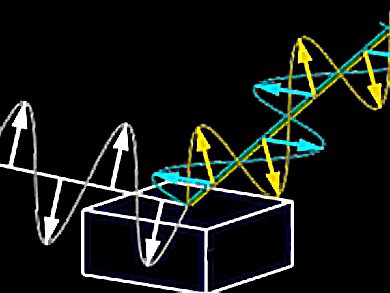Printable electronics are created by spraying or printing inks containing conductive organic molecules onto a surface. In the solar industry, the ability to print solar cells on giant printing presses could make the technology much more affordable and mass marketable.
Michael Chabinyc, University of California, Santa Barbara, CA, USA, Harald Ade, North Carolina State University (NCSU), Raleigh, North Carolina, USA, and colleagues developed a new technique to look at how individual molecules within printable electronics organize. They show that the resonant scattering of polarized soft X-rays (P-SoXS) by molecular orbitals is not limited by crystallinity and that it can be used to probe molecular orientation down to size scales of 10 nm.
First this technique was applyed on highly crystalline small-molecule thin films. Subsequently its high sensitivity was used to probe the impact of liquid-crystalline ordering on charge mobility in polymeric transistors.
It was found that the best performing devices were characterized by particular molecular alignments within the materials. In transistors, they found that as the alignment between molecules increased, so did the performance. In the case of the solar cells, alignment of molecules at interfaces in the device was discovered, which may be the key to more efficient harvesting of light.
- Polarized X-ray scattering reveals non-crystalline orientational ordering in organic films,
B. A. Collins, H. Yan, E. Gann, H. Ade, J. E. Cochran, M. L. Chabinyc, C. Hub, R. Fink, C.Wang, T. Schuettfort, C. R. McNeill,
Nature Mat. 2012.
DOI: 10.1038/nmat3310



